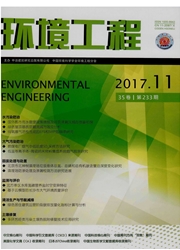

 中文摘要:
中文摘要:
以纯米糠为前体制备水热炭,通过扫描电子显微镜、傅里叶红外光谱仪和元素分析仪等手段表征其物理化学性质;研究时间、p H、Pb~(2+)初始浓度等因素对其吸附Pb~(2+)的影响,以及其对污染土壤中Pb存在形态的影响。结果表明,纯米糠水热炭表面呈现多孔和网状结构,且含有丰富的表面含氧官能团,对溶液中Pb~(2+)有很强的吸附作用,p H=5时吸附效果最好,吸附24 h基本达到平衡。当Pb~(2+)初始浓度为80 mg/L,水热炭投加量为0.75 g/L时,水热炭对Pb~(2+)的吸附量可达72.44 mg/g。将水热炭投加到Pb污染土壤中,能有效降低弱酸提取态Pb含量,提高残渣态Pb含量,使Pb向更加稳定的状态转化。
 英文摘要:
英文摘要:
Hydrothermal carbon using pure rice bran as a material was synthesized,characterized by SEM,FT-IR and VarioEL to represent physical and chemical properties. The hydrothermal carbon was used as an adsorbent to remove Pb~(2+) from aqueous solution. The influence of p H values,contact time and initial Pb~(2+) concentration on Pb~(2+) removal was investigated.And hydrothermal carbon was added to Pb contaminated soil to observe heavy metals formation in soil. The result showed that hydrothermal carbon had porous structure and contained a large amount of oxygen-containing functional groups; it had high adsorption ability to remove Pb~(2+) from aqueous solution. The efficient removal occurred at p H 5 and reached equilibrium within 24 hours. When using 0. 75 g/L hydrothermal carbon to adsorb Pb~(2+) from aqueous solution that the initial concentration of Pb~(2+) was 80 mg/L,adsorption quantity could reach 72. 44 mg/g. Adding hydrothermal carbon to Pb-contaminated soil,the content of weak acid extractable Pb reduced,while the residual fraction Pb significantly increased when compared with control group,this showed that Pb transformed to a more stable state.
 同期刊论文项目
同期刊论文项目
 同项目期刊论文
同项目期刊论文
 期刊信息
期刊信息
